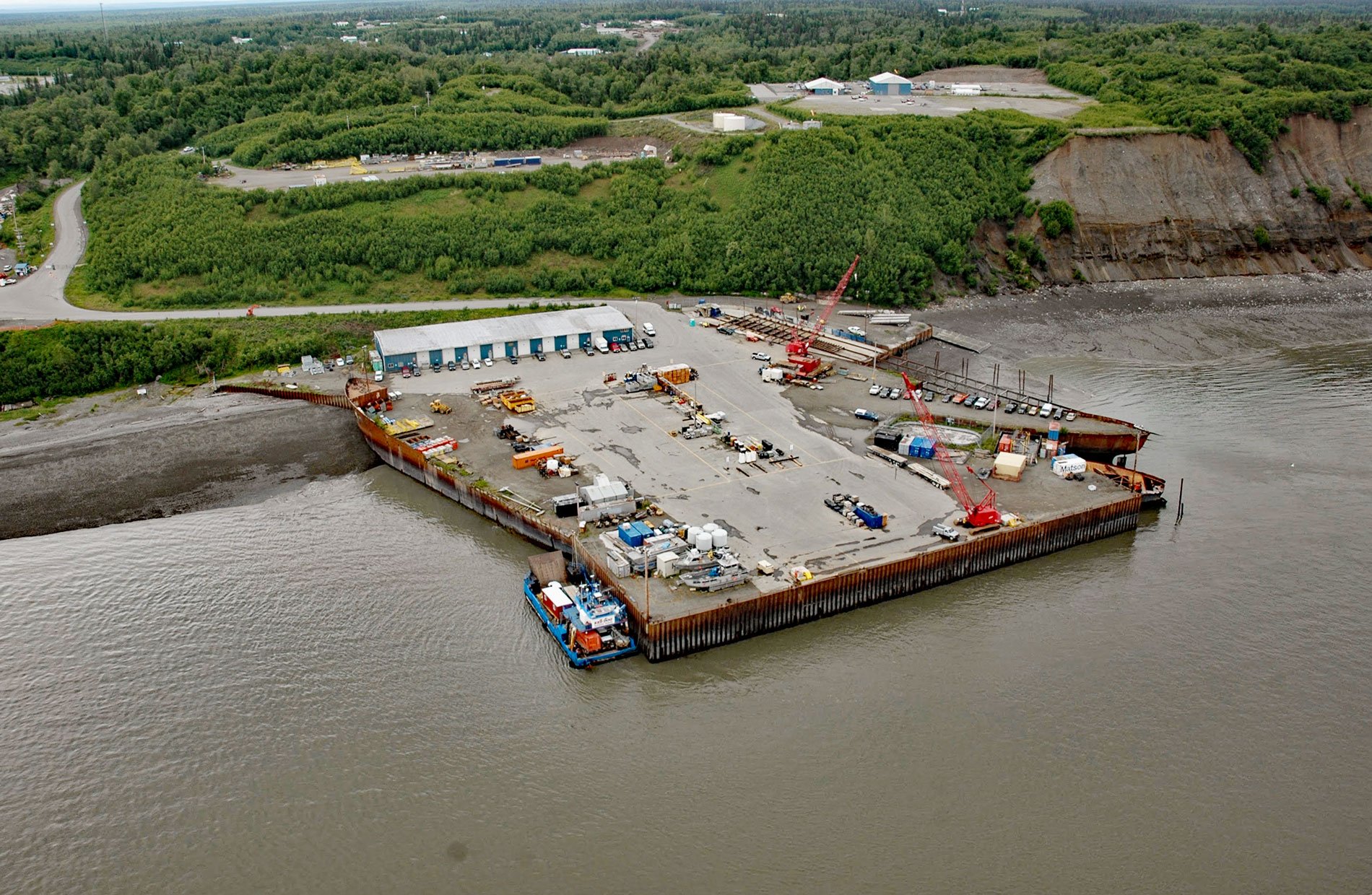Arness Dock is in Nikiski Bay on the Kenai Peninsula, about 58 miles (94 km) southwest of Anchorage and 13 miles (21 km) north-northwest of Kenai, Alaska. Nikiski Bay is named for a former Dena’ina village and boat landing reported as “Nikishka No. 2” in 1912 by the U.S. Coast and Geodetic Survey. Nikishka was a name used by several villages in the same general area. A private dock was built from surplused World War II Liberty ships and is currently used as a base for oilfield supply vessels that service the offshore platforms in Cook Inlet.
In 1964, Jim Arness envisioned a saltwater terminal to support supply barges that would allow the Kenai area to receive goods without having to truck them overland from Seward. The Arness Dock was essentially designed and built by one person. Arness leased waterfront land from the State of Alaska on Nikiski Bay, known for extreme tides of over 30 feet (10 m) and strong currents, but staying ice-free longer than surrounding water. With little more than a pickup truck, a bulldozer, and some help from local laborers, Arness purchased the steel hulls of former Liberty ships and beached them, then filled the hulls with rocks and backfilled gravel to create a dock with one side in deep water. The names of two ships are still visible, SS Edward A. Filene and SS Howell Cobb. The third ship, SS Harold Winslow, is buried in gravel. The project coincided with the beginning of Cook Inlet oil exploration and the eventual construction of drilling platforms.
Liberty ships are a class of cargo vessel built in the United States during World War II. The design was adapted by the U.S. from a British concept for its simple, low-cost construction. The ships were mass-produced on an unprecedented scale with 18 shipyards around the U.S. each launching a new ship every month between 1941 and 1945. A total of 2,710 Liberty ships were built, easily the largest number of ships produced to a single design. After the war, most of the remaining ships were surplused and put into service throughout the world as tramp cargo vessels. Three were eventually purchased and filled with gravel to make the docks in Nikiski Bay. At least two other Liberty ships are in Alaska, SS Francis A. Retka was renamed Oduna and is aground at Cape Pankof on Unimak Island, and SS Albert M. Boe was renamed Star of Kodiak and is currently landlocked and used as an office for Trident Seafoods in Kodiak. Read more here and here. Explore more of Arness Dock and Nikiski Bay here:

